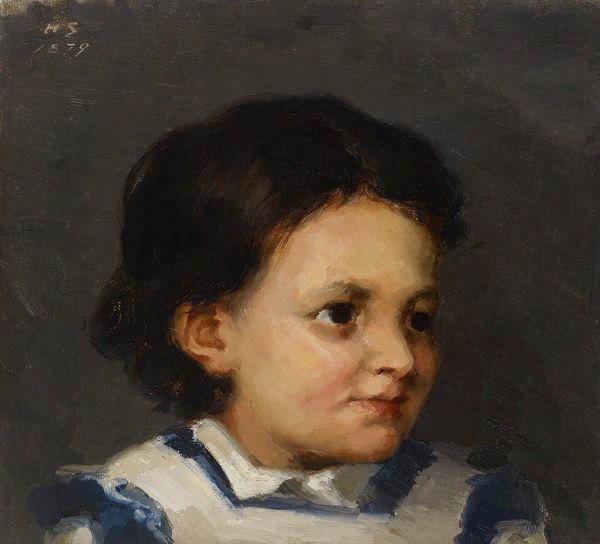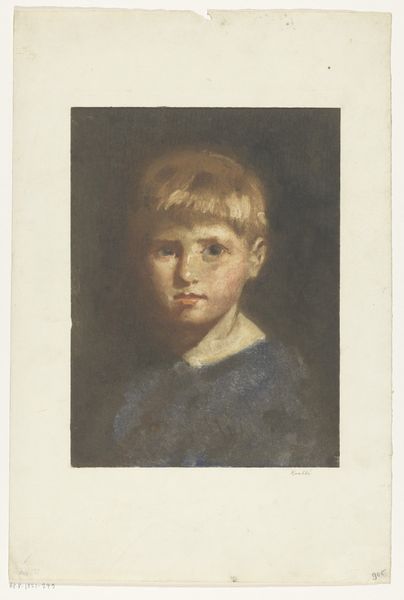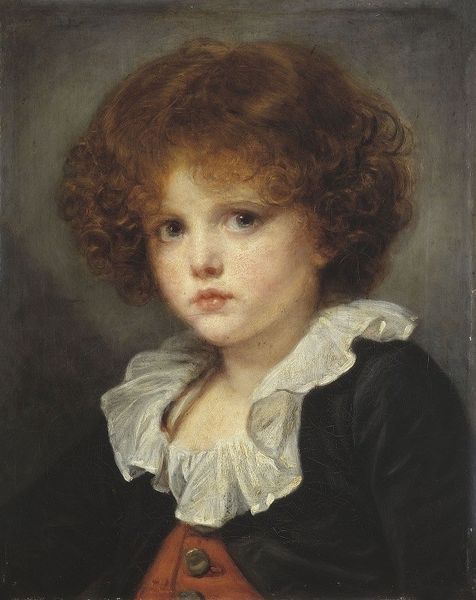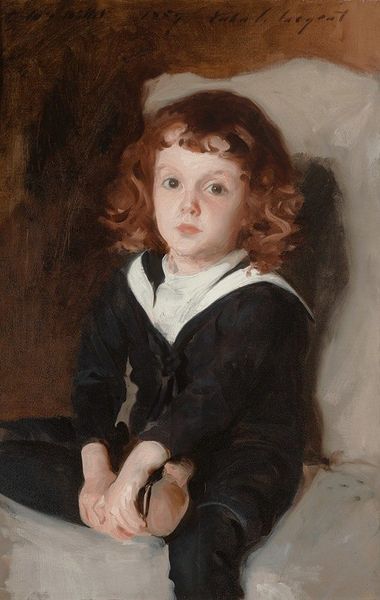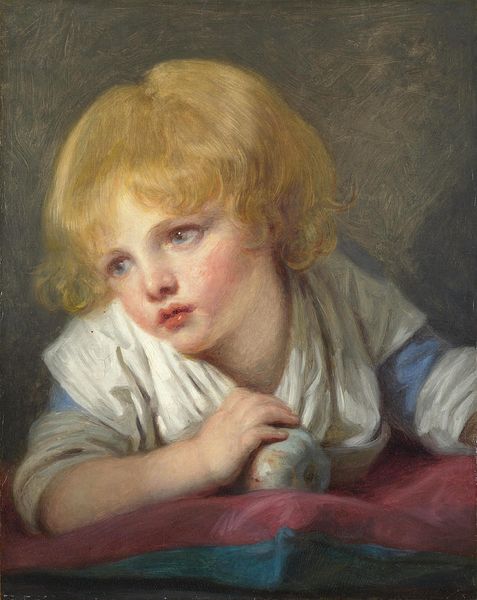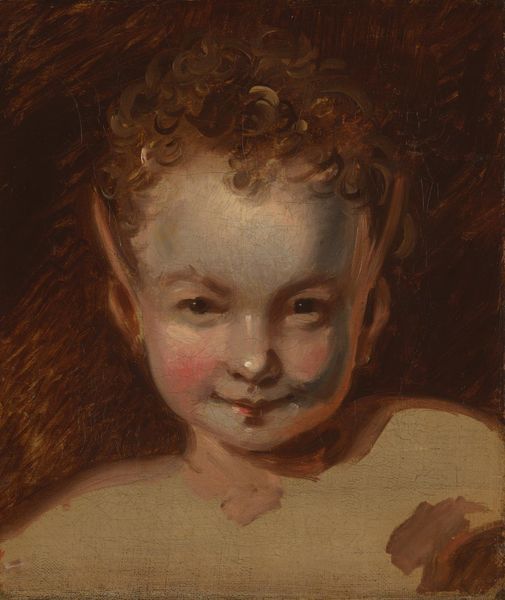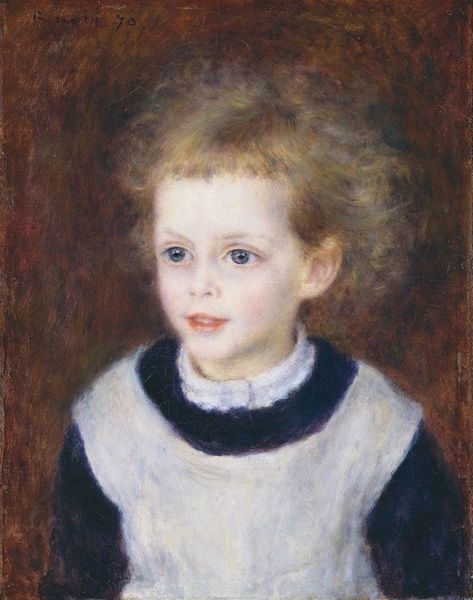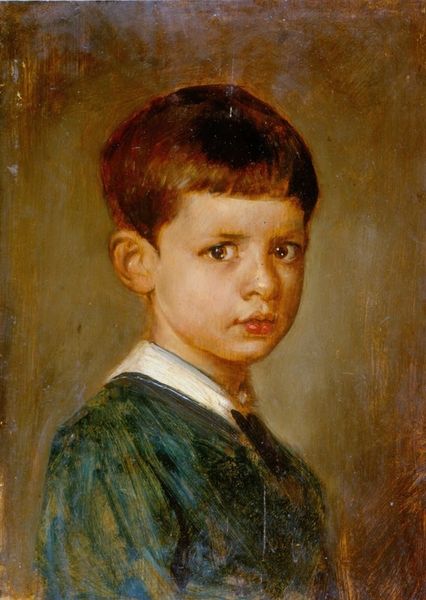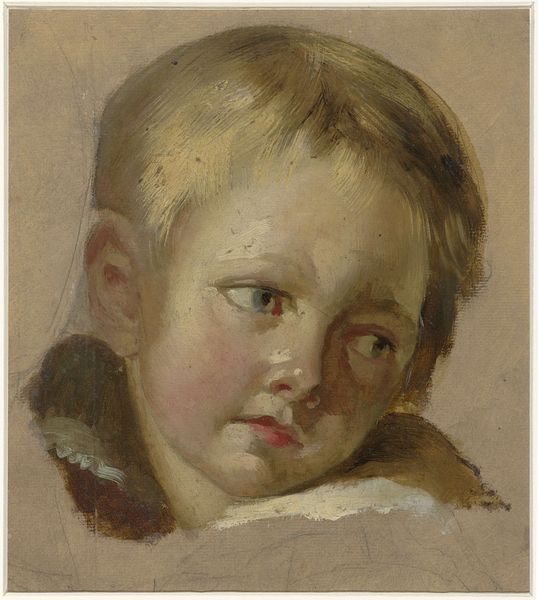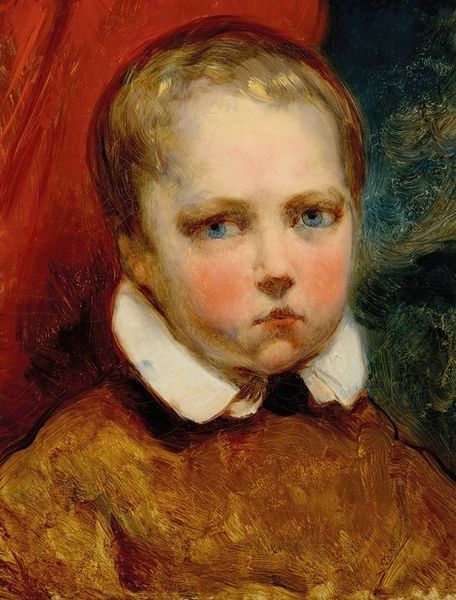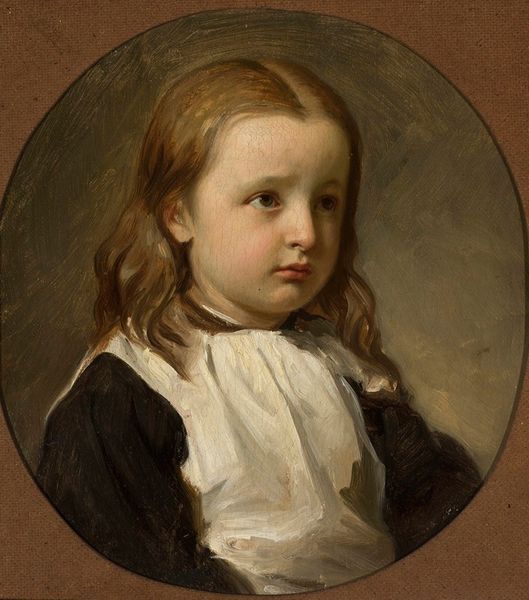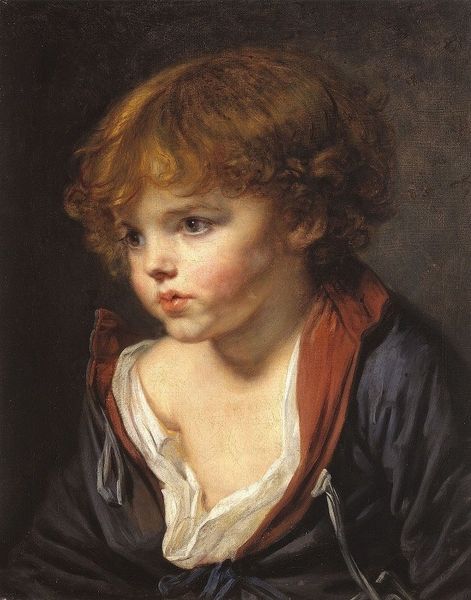
painting, oil-paint
#
portrait
#
figurative
#
painting
#
oil-paint
#
figuration
#
romanticism
Copyright: Public Domain: Artvee
Curator: Marguerite-Juliette Pierret, an oil on canvas created around 1827 by Eugène Delacroix. The portrait shows a young girl against a dark backdrop. Editor: There's such a haunting innocence in her gaze. She's like a little bluebird caught in a twilight forest. Curator: Note the figure-ground relationship here. The dark background almost absorbs her form, pushing her fair complexion and striking blue garment forward into the viewer’s space. This draws immediate attention to her face and costume. Editor: It also heightens the vulnerability, don’t you think? Like a spotlight on her in the immensity of time. I find the brushwork intriguing. There's this raw energy—especially around the edges—that hints at the restless spirit often associated with Delacroix, a painter closely related to the Romanticism style. Curator: Indeed. Delacroix's handling of light and shadow is noteworthy; it shapes the contours of her face, emphasizes her youth. Also, the simple composition directs our eye towards the psychological dimensions of the sitter. This is not merely a representation of her physical likeness, but it is a construction that evokes her transient essence, reflecting her internal landscape, the ephemerality of her childhood, and the burgeoning anxieties that shadow innocence. Editor: Transient is a great way to say it. Looking at her, I can’t help but imagine what she might have been thinking, or feeling at the moment it was painted. Maybe there's a hint of impatience in her sideways glance? Or maybe just a child's distraction? Art is funny. You get to spin the stories forward in your head as if nothing's changed... as if these feelings can float down to us a century later. Curator: An excellent point; art and our perspective can serve as portals to another dimension, the world that we have yet to inhabit. Her look also emphasizes our world here—and our relation to its subject. Editor: What a compelling glimpse into a life that unfolded nearly two centuries ago. Curator: Precisely. The artist enables our own contemplation of temporality.
Comments
No comments
Be the first to comment and join the conversation on the ultimate creative platform.
